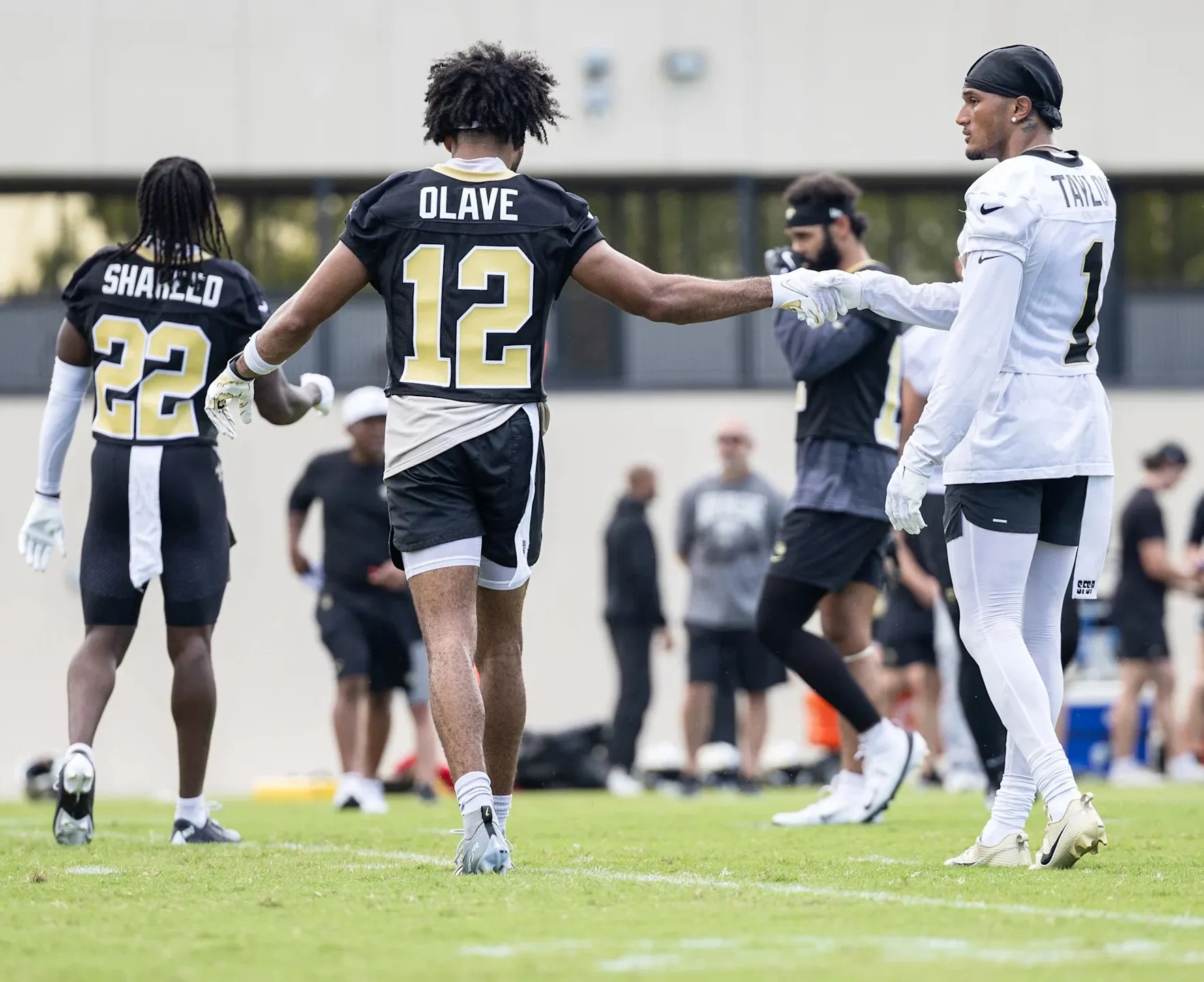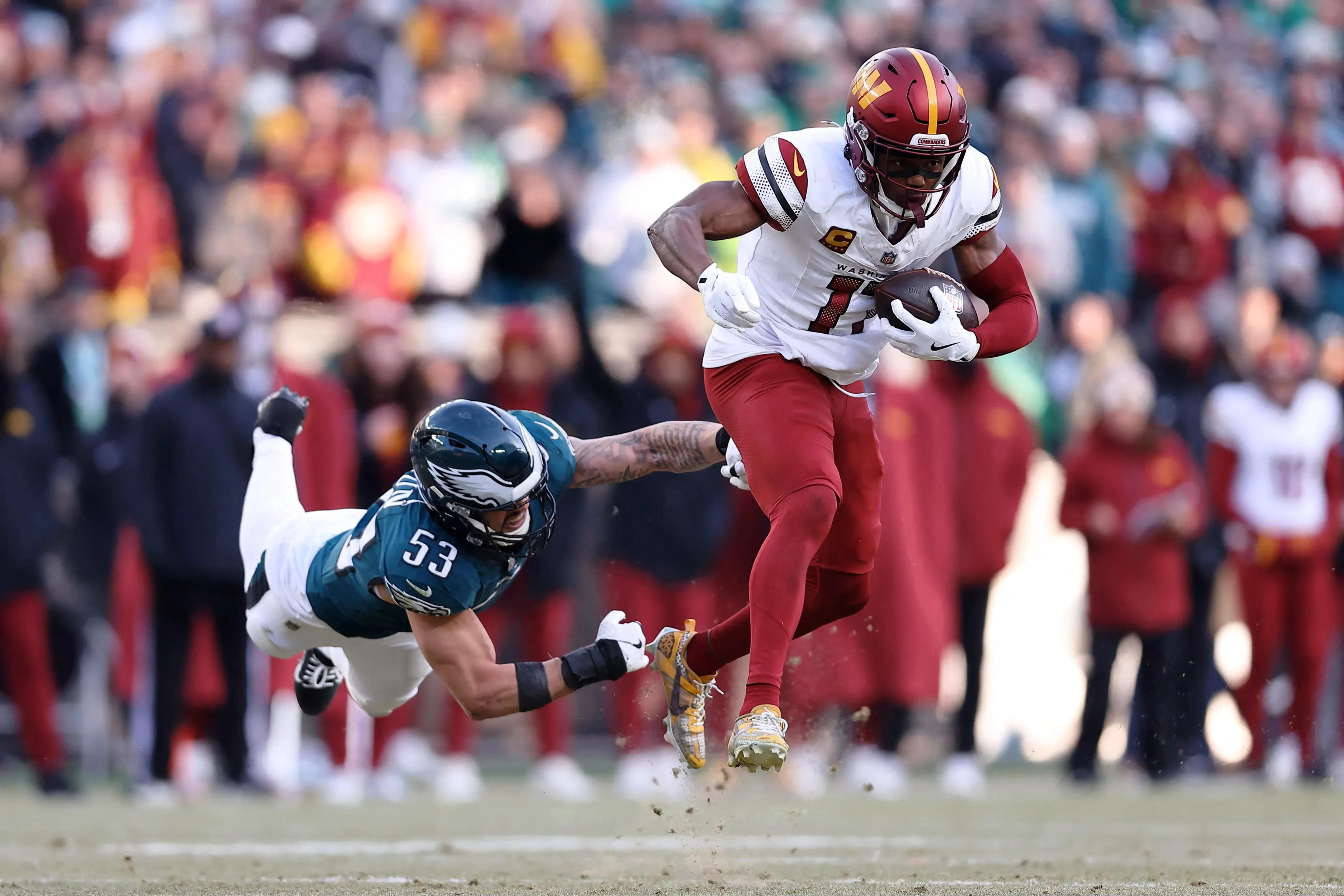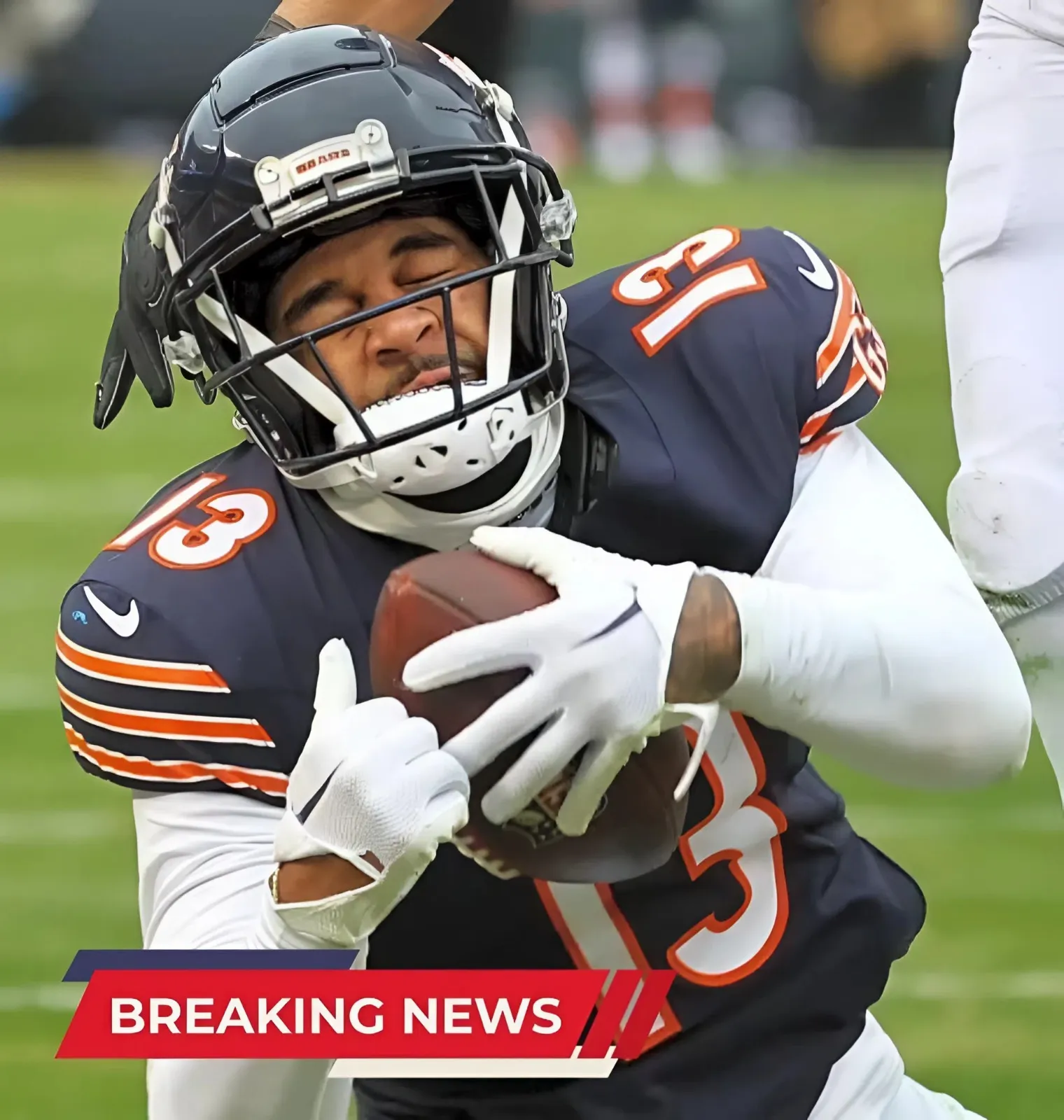This week is a big one in Foxborough, Massachusetts for the New England Patriots.
Wednesday marks the beginning of training camp, a time when offseason hopes and regular season truths blur just enough to create the perfect fantasy-fueled euphoria.
Arguably, this is still just the second most exciting day this week.
Sunday will be the nine-month mark of star receiver Stefon Diggs’ ACL tear – a magic number. Nine months, per the American Academy of Orthopedic Surgeons, is the absolute minimum time that an athlete should avoid returning to full-speed play to mitigate injury risk.
Just in time for training camp, the New England Patriots released their list of players who will start camp on the Physically Unable to Perform (PUP) list – a list that Diggs was notably absent from.
This was a shock.
Data shows ACL tears in NFL athletes take an average of 10.5-12 months to fully recover from; for a demanding position like receiver, this number is usually on the higher end of the range. Diggs, a 31-year-old rehabbing from one of the worst injuries in the sport, was therefore supposed to be a gamble in free agency. Even though reports throughout the spring raved about his recovery progress, it was impossible not to take them with a grain of salt. And yet, despite his age and position, he seems ready to start the season on day one.
The anterior cruciate ligament, or ACL, is a structure that is critical to stabilizing the knee joint. Tears most commonly occur as noncontact injuries due to a sudden change of direction. The injury has appropriately gotten a reputation as a career-defining setback. 20% of NFL players who tear their ACL never see the field again; those who do return see their productivity decline by about ⅓ compared to their pre-injury selves.
As a sports journalist who also happens to be in medical school, Diggs’ seemingly miraculous recovery captivated my attention. I wanted to understand two things: one, how exactly Diggs was able to recover so efficiently, and two, how this would affect his on-field performance through the fall.
The answer to the latter is a bit more nebulous right now. But in learning the medicine behind his injury, I found a recovery journey in which almost everything that needed to go right did go right – a journey that spotlights the determination of a star who refuses to let himself become a statistic.
How Diggs Stacked Some Odds in His Favor:
Diggs’ ACL tear was just about the worst luck imaginable – but it could have been way worse.
For one, reports seem to indicate that Diggs only tore his ACL.
Meniscus and medial collateral ligament (MCL) tears commonly accompany ACL tears and are substantial negative predictors of post-injury career length and return-to-play rates. For context, one study found that the absence of accompanying meniscus or MCL injury nearly doubled a player’s odds of returning to play within a year.
Position-wise, receivers have some of the most strenuous physical demands on their knees; it makes sense then that their return-to-play rates remain amongst the lowest of all positions. Yet, among receivers, players with greater pre-injury NFL experience have been found to be more likely to succeed in post-ACL recovery. Diggs, who will be entering his 11th year in the league, certainly falls within this category.
As far as pre-surgical odds go, Diggs was in a statistically solid position. Yet, I wanted to better understand how the surgery itself could have been optimized to give him the best chance at a return.
ACL repair surgeries involve “harvesting” a patient’s own tendon from somewhere else in the body and using it to rebuild (“graft”) the torn ACL.
As one might expect, the nuances of this surgery can be extraordinarily complex, from the decision to use single or double “bundles” (ie how many tendon grafts), what tendon to harvest (quadriceps and patellar tendons are most common), what additional anatomical supports should be constructed (such as a lateral extra-articular tenodesis, or LET), and what postoperative considerations should be kept in mind with professional athletes.
Hungry for answers, I consulted one of the foremost sports medicine experts in the country.
“The most standard is a single bundle… my guess would be that he probably had a patellar tendon and probably has an [LET] with it” says Dr. Brian Lau, an orthopedic surgeon at Duke University Hospital and a nationally renowned expert in shoulder and knee injuries. As a team physician for the Duke Blue Devils and the director of Duke’s FIFA Medical Center, Dr. Lau specializes in caring for weekend warriors and elite athletes alike.
“[The LET] can be used to augment and further secure the rotational stability of the ACL.”
Dr. Lau further elaborated on the difference between quadriceps and patellar tendon grafts, stating that the patellar tendon is commonly preferred in professional athletes since agents are more familiar with its recovery process. However, he highlighted that a patellar tendon graft can cause episodes of knee pain, which could be worth monitoring in Diggs as the season progresses.
Yet, any operation is only as good as the postoperative recovery. It is in this sphere that Diggs’ dedication to recovery has been most apparent.
The Perfect Rehab Plan:
Diggs’ injury course has been straightforward.
On October 27th, 2024, he collapsed with a noncontact injury to his knee. Two days later, an MRI confirmed a torn ACL. It’s unreported when exactly he got surgery, but for the next couple months there were few updates on his status.
It wasn’t till 11 weeks after his injury that he posted an Instagram story rehabbing with resistance bands. At 21 weeks post-tear he was seen squatting in the weight room, and at 23 weeks, he was seen running full-speed routes through cones.
Though recovery timelines can vary from person to person, the overall trends tend to remain consistent; Diggs’ recovery based on his social media posts seems to follow a standard timeline that involves graduating from surgery to rebuilding motion, then strength, then agility.
Perhaps the greatest window into Diggs’ recovery process came in May when he posted a vlog on his YouTube channel chronicling his rehab at Alkeme Sports Rx in Florida. Though he unfortunately dons a New York Yankees hat in the video (which fortunately falls off at one point), the video highlights a pristine rehab routine.
The video shows Diggs undergoing dynamo testing for strength in his quadriceps, hamstrings, and support muscles around his hip/knee; it shows a hop-step test to measure gait instability when jumping and landing; it shows power production monitoring between his limbs; it shows Diggs training in the swimming pool, a technique that can crucially reduce both inflammation and joint edema.
Dr. Lau reiterated the importance of these metrics in monitoring rehab status.
“We have an array of tests we use at Duke to help us determine [recovery]... quad strength, hop testing, as well as… LESS test, in which you jump off of a block to see how well you can protect yourself in landing… so all that is incorporated into our return to play battery that we’ve been studying here”
Of course, the true engine to success with this rehab is hard to encapsulate with a single video: consistency. Where the visuals fall short in this regard, Diggs’ own words in the video fill in the gap.
“If you wasn’t here every day with me in rehab, you probably would look at me four-five months like, damn, that’s fast. Yeah, but you ain’t be here every day, you ain’t been doing what I’ve been doing… you haven’t been as consistent as I’ve been.”
The Science of Staying Positive:
Of all the possible predictors of return to preinjury performance, the most significant one is maybe the most fascinating one: mindset.
Multiple peer-reviewed studies have found strong correlations with psychological readiness and an athlete’s return to form after ACL tears. In fact, this is one of many areas where Dr. Lau has published research of his own.
“We’ve been focused so much on the objective and physical aspect of things, but a psychological aspect is very very important as well…” explains Dr. Lau. “If you’re not confident in your knee, if you haven’t been put in game situations that kind of gauge that confidence, it doesn’t matter how stable you are, your risk of reinjuring yourself has increased.”
Dr. Lau elaborates that the decision for a player to return to play relies on both objective metrics (many of which were featured in Diggs’ rehab video) and a player’s psychological readiness and comfort in returning.
Fortunately, Diggs’ recovery video in May provides incredible insight into his psychological readiness.
“I wasn’t worrying about being the same player I was before,” Diggs states. “I’m focused on being better than before.”
Throughout the video, Diggs emphasizes that he is not scared of reinjury.
“Even for athletes, it is mental, but at the same time it’s so traumatic of an injury, like some people like, don’t ever be the same, will think about the injury. But like me, I’m like, the worst has already happened. Like, I already tore my s***. So if they corrected it, I got to trust the doctor.”
Ironically, this lack of worry is actually associated with a more successful recovery.
When asked to describe the commonalities in players that he has found to thrive following ACL-recovery, Dr. Lau corroborates Diggs’ statement, explaining, “well, it’s just overall determination… it does take a lot of effort to… gain the confidence and that reckless kind of mentality to where you’re gonna go 100 miles-per-hour and go into the middle and catch these passes.”
Projecting Diggs’ Next Steps:
With nearly every post-injury variable in his favor – an isolated tear, his NFL experience, high-level surgical care, a gold-standard rehab plan, and a steadfast mental attitude – it’s no surprise that Diggs has avoided the PUP list to open training camp. But how he will advance through the next few weeks continues to remain a mystery.
When asked to project Diggs’ participation in camp, Dr. Lau explained that the key was in controlled re-exposure.
“One of the biggest things with [Diggs] is his route running and his ability to cut… that’s something that I would want to make sure that he’s very comfortable with on his own, like solo drills or one-on-one drills… then once he gets more confident… you get him into more group drills before getting him into a scrimmage situation and eventually in the game situations. But this is kind of progressive…”
This progressive return-to-play protocol emphasizes psychology alongside biomechanics. Dr. Lau underscored that Diggs’ comfort with his knee will dictate the pace of reintegration.
“For some people, that may take a couple weeks, for some people it might take a few days…”
In this sense, the NFL schedule has worked in Diggs’ favor. Training camp offers a perfect low-stakes time for Diggs to gradually progress through the intensities of gameplay. It provides him with a chance to test faster-paced action on some days and rest on others.
For Diggs, camp will be more than just a physical checkpoint – it will be a chance to vindicate his efforts since October. His mere presence at this stage is a remarkable achievement in its own right. It’s a testament to his will, and for Patriots fans, it should be a promising indicator of the fire that he will bring New England in the fall.
“Not being able to do what you want to do is hard,” Diggs reflects in his vlog. “Barely walking, crutches, braces. Ready to cry everyday like, bro, why? Now… we running, running, jumping, cutting, finishing, sprinting. I can’t lose. I’m happy.”




